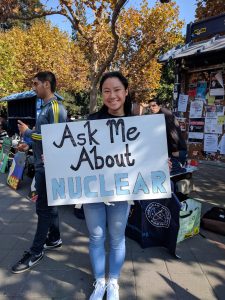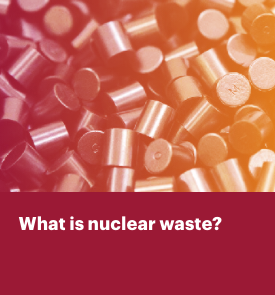The issue of nuclear waste and the history of how it has been handled in the United States and worldwide is a complicated one. When it comes to discussing the issue of finding solutions, the conversations can be difficult due to conflicting opinions and viewpoints.
Growing up, nuclear waste was not a topic that ever crossed my mind or came up in conversation. In high school, when I was deciding on my college major, a desire to help solve the global climate crisis motivated me to study nuclear engineering. Yet at the time, I didn’t have a clear understanding of the complex nature of the nuclear fuel cycle and the industry at large.
When I started taking nuclear engineering courses at the University of California, Berkeley, nuclear waste was seldom discussed in classes or seminars. Even when I eventually took a nuclear waste technical course, the societal challenges of nuclear waste storage and disposal were barely discussed, and if they were, the issues were often dismissed because it was considered that the public’s concerns were not “based in science.”
As a student, I spent time volunteering at different science education events throughout the San Francisco Bay Area where I learned how to talk to people about nuclear science. I was and still am incredibly passionate about nuclear and broader science education.
As someone approaching nuclear science from a technical perspective, and as someone who was surrounded by peers who viewed nuclear science similarly, it was difficult to honestly understand why the public was skeptical of nuclear power and fearful of nuclear waste. However, I have learned from listening to all sides, that the public has incredibly valid concerns and questions about nuclear power and radioactive waste, and the industry has to do a better job of understanding these concerns.

The storage and disposal of nuclear waste is more than just a technical problem, and solving the puzzle of how to permanently dispose of nuclear waste requires a greater understanding of its intersection with our own lives and well-being.
A desire to advance this understanding is behind Deep Isolation’s decision to launch a new resource, About Nuclear Waste. (It’s also why we launched an educational podcast last year called Nuclear Waste: The Whole Story.)
As the curator for the About Nuclear Waste content, my goal is to outline the facts of nuclear science within the context of valid concerns in order to find common ground that helps our readers have more productive discussions about this important issue.
There are approximately 500,000 metric tons of nuclear waste worldwide, and none of it has been permanently disposed of yet. Every year more nuclear waste is generated from nuclear power plants and nuclear industries. As the world begins to seriously explore advanced nuclear options to develop more low-carbon energy sources, nuclear waste will continue to be a problem for future generations unless an equal effort is put into finding a solution for it.
I hope you find About Nuclear Waste helpful and informative. Sharing this knowledge of what nuclear waste is will hopefully be a good step toward a shared understanding that will help build public support for a permanent disposal solution. If you don’t find your questions answered please let us know, and we will do our best to address them in future updates to this resource.

